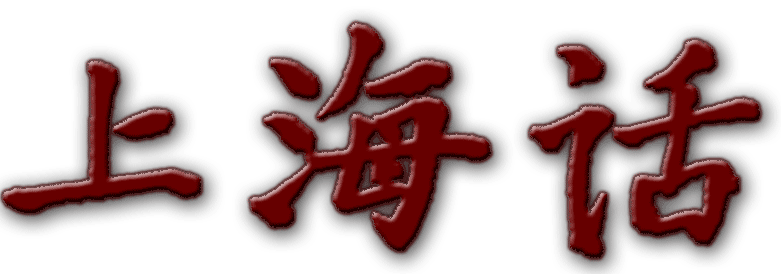|
Shanghainese 上海话, is a dialect of Wu Chinese spoken in the city of Shanghai.
Wu has over 100 million speakers, and is the second most spoken form of Chinese
after Mandarin.
Wu Chinese is a major division of the Chinese language. As of 1991 Wu Chinese has 87 million speakers,
making it one of the largest languages system in China, second to Mandarin Chinese
which has over 800 million speakers. Wu
dialects are notable among Chinese languages in having kept voiced consonants,
such as /b/, /d/, /g/, /z/, /v/, etc.
Mandarin and Cantonese have no voiced consonants.
The term Wu came from the Wu Kingdom which was united by Wu
Taibo, then known as Gouwu. Wu Kingdom’s capital sits only 80 kms away from Shanghai 2500 years
ago. The kingdom was brought up again during
the Five Dynasties and Ten States period
as the Kingdom of
Wuyue (吴越国). Eventually, the tiny coastal kingdom of Wu
spread through the much larger Chu
State during the Zhou
Dynasty.
Wu spoken today descends from the languages spoken in Wu, Eastern Chu, and Yue kingdoms, along with Han influences
later on. Major cities in the Wu-speaking region today include Shanghai,
Suzhou, Wuxi, Changzhou, Hangzhou, Ningbo, Shaoxing and Wenzhou.
Shanghainese, also called the Shanghai
dialect is the representative dialect of Northern Wu. It is the primary language of China’s biggest city, Shanghai and is spoken by over 13 million
people in the area alone.
Shanghai
dialect is abundant with consonants and pure vowels.
Shanghainese has only two live tonal contrasts, high and low. The Shanghainese tonal system is different
from Thai and Vietnamese Chinese languages. Shanghainese syllables are quick
and direct; the average Shanghainese syllable is 30% shorter than Mandarin.
Shanghai
dialect has a group of voiced initials and manifests unvoiced unaspirated and
aspirated stops. Moreover, there are unvoiced and voiced fricatives sets.
Shanghainese also features Palatized initials. The /l/
consonant is also particular in that there is a minor flapping of the tongue
during speech, similar to some extent to the Japanese r (although lateral and
not post-alveolar). The sound may be made by lightly placing the tongue on the
back of the upper set of teeth. However this flapping is not present when each
character is individually pronounced.
Shanghainese grammar like other Chinese topolects has
changed substantively over the past hundred years, influenced by Mandarin. Shanghai dialect has a relatively
higher amount of Subject-Object-Verb sentence structure than Mandarin or
Cantonese. There is huge array of personal and demonstrative pronouns used
within dialects. Wu is in general more Subject-Object-Verb (SOV) oriented (Qian
1997), although Mandarin influence has created many new SVO expressions as
well. The circumstances at which they are used and the particles involved
differ for SOV and SVO.
Although Shanghainese is Sinitic, suggestions of a
non-Sinitic indigenous substratum can still be found in Shanghainese word
formation and structure. The core basic vocabulary in Shanghainese is
significantly different from Mandarin, with many words instead being cognates
with Tai-Kadai languages. Wu dialects in Shanghai's
rural suburbs have as many as 100 cognates with Tai languages within one
thousand common words surveyed (Li, Hui 2001). Many adjectives in Shanghainese
end with -shishi, -lei or -leishi, while adverbs are usually uninflected.
Morpheme order in words are also often reversed from Mandarin. In general,
Shanghainese is more agglutinative and polysyllabic than Mandarin. There are
also several illogical sentence constructions in Shanghainese that while
negative literally, imply a positive statement.
Many Shanghainese see their mother tongue as an essential
element of the Shanghainese identity.
However,, Shanghainese is not encouraged to be used in schools. Also, the media are strongly discouraged from
broadcasting in contemporary Shanghainese.
Several television advertisements in Shanghainese have been removed
shortly after airing Just recently, linguists were barred from assigning
Chinese characters to indigenous Shanghainese and Wu words with no Mandarin
equivalent (Qian 2004). Due to the vast
dominance of Mandarin in Chinese society over the past fifty years, some Shanghainese
speakers feel that their native dialect is ill-suited for contemporary society. Normally (but not always), if there's one
non-Shanghainese speaker in a group of Shanghainese speakers, the entire group
will speak in Mandarin.
|


